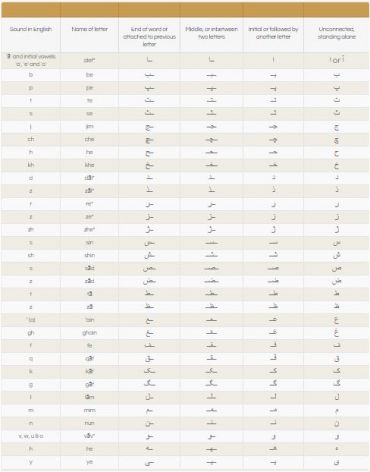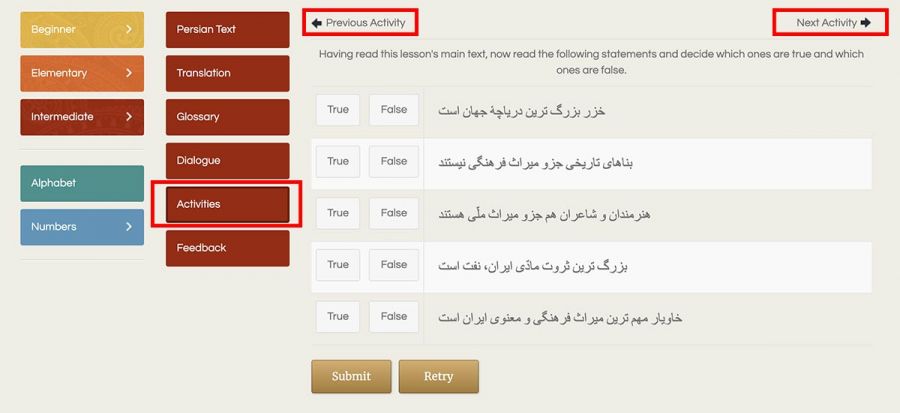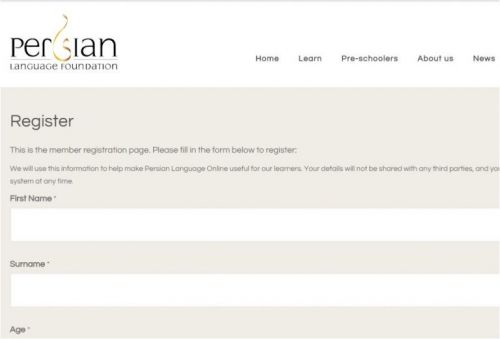
Project 6060 – Lesson 50
EN
FR
ES
FA
-
EN
Lesson 50
The Constitutional Movement
***
Translation
For thousands of years, Iran was officiated as a kingdom. Some of the kings were unkind and some were friendly and respected. Some of them even lost parts of Iran. The highest power was always in the hand of the king, the people did not have a role in choosing the king or governing the country and in most cases, the king’s government was dictatorial.
In the final two decades of the rule of Naser Aladdin Shah Qajer, the situation in Iran gradually got worse and the intellectuals, political activists, and clergy undertook widespread efforts to rein in the king’s power and subvert the totalitarianism until, in the end, a movement against the Qajer dynasty took shape, which was later named the constitutional revolution, or movement. After the death of Naser Aladdin Shah, the activities of this movement’s activists intensified and as a result of these activities, the first Iranian constitution was written and a national legislative assembly was formed so that Iran’s dictatorial government could become a constitutional kingdom.
After the death of Naser Aladdin Shah, and the coronation of his son, Mozafferaladdin Shah, Iranian customs were in the hands of non-Iranians, the influence of the Russians in Iran increased, injustice and insecurity increased and there even arose problems with bread in the country. Because of this, the people were very dissatisfied. At this same time, sugar became expensive in Iran and the governor of Tehran sentenced a few traders to receive corporal punishment for selling at high prices. This caused the merchants, clergy and intellectuals to protest. They lectured at gatherings and in mosques against dictatorship and for the establishment of a court of justice, and also called for the dismissal of the chancellor and governor of Tehran. Some of the people and clergy went to the Hazrat-e Abdulazim Mosque in the town of Rey, close to Tehran and gathered there as a protest.
After Mozafferaladdin Shah promised to dismiss the chancellor and form a court of justice, the scholars returned to Tehran; but the government did not do either of these things and the violence against people increased. As a result, the protests became more widespread, the scholars went to Qom, and the merchants and a number of the people went to the British embassy, fearing for their lives and staged a protest there. They requested that the scholars return and that the courts of justice be formed. With this, the chancellor resigned and the king elected a new prime minister.
At this same time, Russia was defeated by Japan and in Russia a revolution began to develop. Upon witnessing the victory of a small Asian country that had a constitution over a European power that didn’t have a constitution, Iranians were no longer afraid to express their request. With the climax of the people’s movement, the topic of parliament and the restriction of the king’s power were gradually proposed.
Eventually, Mozafferaladdin Shah signed a constitutional order in the final days of his life and after the drafting and legislation of the constitution, he agreed upon the establishment of a parliament. The scholars and clergy who had gone to Hazrat-e Abdulazim and Qom returned to Tehran and the sitting protest in the British embassy came to an end.
In the end, the first parliament opened on the 7th of October 1906 in Tehran. On the basis of the constitution, some of the parliament’s duties included:
- The production of a national budget
- Approval of the transfer or sale of underground resources
- Approval of changes in boundaries
- Approval of contracts with foreign countries
- Approval of the formation of national companies
- Approval of any type of government contracts
- Approval of the construction of roads and railways
About one year later, preparations got underway for holding a grand celebration of the anniversary of the order for a constitution and the formation of the first parliament in front of the parliament. They decorated the whole enclosure and set up beautiful stalls in there. This ceremony continued for three days and nights. Amongst the other programmes in that celebration were a parade of school children, fireworks, a reception with sweet drinks and pastries and the attendance of members of national associations.
-
FR
Leçon 50
Le mouvement constitutionnel
***
Traduction
Coming soon
-
ES
Lección 50
El movimiento constitucional
***
Traducción
Coming soon
-
FA
درس پنجاهم
جنبش مشروطه
***
متن فارسی
کشور ایران برای هزاران سال به صورت پادشاهی اداره می شد. برخی از پادشاهان نامهربان و بعضی دوست داشتنی و مورد احترام بودند. حتّی برخی از آنها بخش هایی از ایران را از دست دادند. همیشه بالاترین قدرت در دست پادشاه بود، مردم نقشی در تعیین پادشاه یا ادارۀ کشور نداشتند و در بیشتر موارد حکومت پادشاهان استبدادی بود.
در دو دهۀ پایانی حکومت ناصرالدّین شاه قاجار اوضاع ایران به تدریج بدتر شد و روشنفکران، فعّالان سیاسی و روحانیون تلاش های گسترده ای برای مهار قدرت شاه و براندازی استبداد انجام دادند تا در نهایت جنبشی علیه سلسلۀ قاجار شکل گرفت که بعدها انقلاب یا جنبش مشروطه نامیده شد. پس از مرگ ناصرالدّین شاه، فعّالیّت های فعّالان این جنبش بالا گرفت و در نتیجۀ این فعّالیّت ها، اوّلین قانون اساسی ایران تدوین و مجلس شورای ملّی تشکیل شد تا حکومت استبدادی ایران به حکومت مشروطۀ سلطنتی تغییر یابد.
پس از مرگ ناصرالدّین شاه و به سلطنت رسیدن پسرش مظفّرالدّین شاه، گمرک ایران در دست غیر ایرانی ها بود، نفوذ روس ها در ایران افزایش یافت، بی عدالتی و ناامنی بیشتر شد و حتّی در کشور مشکل نان وجود داشت. به همین علّت مردم بسیار ناراضی بودند. در همین زمان قند در ایران گران شد و حاکم تهران چند بازرگان را به خاطر گران فروشی تنبیه بدنی کرد. این کار باعث اعتراض بازاریان، روحانیان و روشنفکران شد. آنها در مجالس و در مساجد بر ضدِّ استبداد و برای تأسیس عدالتخانه سخنرانی کردند، همچنین خواستار برکناری صدراعظم و حاکم تهران شدند. بعضی از مردم و روحانیان به صورت اعتراض به مسجدِ حضرتِ عبدالعظیم در شهرِ ری نزدیک تهران رفتند و در آن جا تحصّن کردند.
پس از این که مظفّرالدّین شاه قول داد صدراعظم را برکنار کند و عدالتخانه را تشکیل دهد، علما به تهران بازگشتند، امّا حکومت هیچ کدام را انجام نداد و خشونت در برابر مردم افزایش یافت. در نتیجه، اعتراض ها گسترش پیدا کرد، علما به قم رفتند و بازاریان و عدّۀ زیادی از مردم از ترس جانشان به سفارت انگلیس رفتند و در آنجا تحصّن کردند. آنها خواستار بازگشت علما و تشکیل عدالتخانه شدند. با این کار صدراعظم استعفا و شاه نخست وزیر جدیدی انتخاب کرد.
در همین زمان روسیه از ژاپن شکست خورد و در روسیه تحوّلات انقلابی آغاز شد. ایرانیان با مشاهدۀ پیروزی یک کشور کوچک آسیایی که دارای قانون اساسی بود بر یک قدرت اروپایی که قانون اساسی نداشت دیگر نمی ترسیدند که درخواست های خود را بیان کنند. با اوج گیری جنبش مردم، به تدریج مسأله پارلمان و محدود کردن قدرت شاه مطرح شد.
بالاخره مظفّرالدّین شاه در آخرین روزهای زندگیش فرمان مشروطیّت را امضا کرد و پس از نوشته شدن و تدوین قانون اساسی با تأسیس مجلس موافقت کرد. علما و دیگرانی که به حضرت عبدالعظیم و قم رفته بودند به تهران بازگشتند و تحصّن در سفارت انگلیس به پایان رسید.
سر انجام مجلس اوّل در ۷ اکتبر ۱۹۰۶در تهران گشایش یافت. بر پایۀ قانون اساسی برخی از وظایف مجلس عبارت بود از:
• تهیّۀ بودجۀ کشور
• تصویب انتقال یا فروش منابع زیرزمینی
• تصویب تغییر مرزهای کشور
• تصویب قراردادها با دولت های خارجی
• تصویب تشکیل شرکت های ملّی
• تصویب هر گونه قراردادهای دولتی
• تصویب ساختن راهها و راه آهن
حدود یک سال بعد، مقدّمات برگزاری جشن بزرگی در سالگرد فرمان مشروطیّت و تشکیل مجلس اوّل، در جلوی مجلس آماده شد. تمام محوّطه را تزیین و غرفههای زیبایی در آنجا برپا کردند. این مراسم سه شبانه روز ادامه داشت. از برنامههای دیگر آن جشن، رژۀ شاگردان مدارس، آتش بازی، پذیرایی با شربت و شیرینی و حضور اعضای انجمنهای ملّی بود.
DIALOGUE
DIALOGUE
DIÁLOGO
مُکالِمه
-
EN
Translation of Dialogue
Maryam: What people played a role in the constitutional movement?
Bahman: All the people. Merchants, intellectuals, clergy.
Maryam: What do you think caused the people to become dissatisfied?
Bahman: Everything had become expensive. In particular, there was a shortage of bread.
Maryam: Of course the people were also unhappy that loads of stuff was in the hands of foreigners.
Bahman: That’s right. There were lots of factors.
Maryam: Were the people after a parliament from day one?
Bahman: No, at first they just wanted justice and for the governor of Tehran to change.
Maryam: So then the intellectuals and scholars proposed the subject of a parliament?
Bahman: Yes, that’s it. -
FR
Traduction de Dialogue
Coming soon
-
ES
Traducción de Diálogo
Coming soon
-
FA
متن فارسی مُکالمه
مریم: چه آدمایی در جنبش مشروطه نقش داشتن؟
بهمن: همۀ مردم. بازاریا، روشنفکرا، روحانیون.
مریم: فکر می کنی چی باعث شد مردم ناراضی بشن؟
بهمن: همه چیز گرون شده بود. مخصوصاً کمبود نون وجود داشت.
مریم: البته مردم از اینکه خیلی چیزا دست خارجیا بود هم ناراحت بودن.
بهمن: درسته. عوامل زیادی وجود داشته.
مریم: مردم از روز اوّل دنبالِ تشکیل مجلس بودن؟
بهمن: نه، اونا اوّل فقط دنبالِ عدالت بودن و اینکه حاکم تهران عوض بشه.
مریم: پس بعداً روشنفکرا و علما موضوع پارلمانُ مطرح کردن؟
بهمن: بله، همین طوره.








